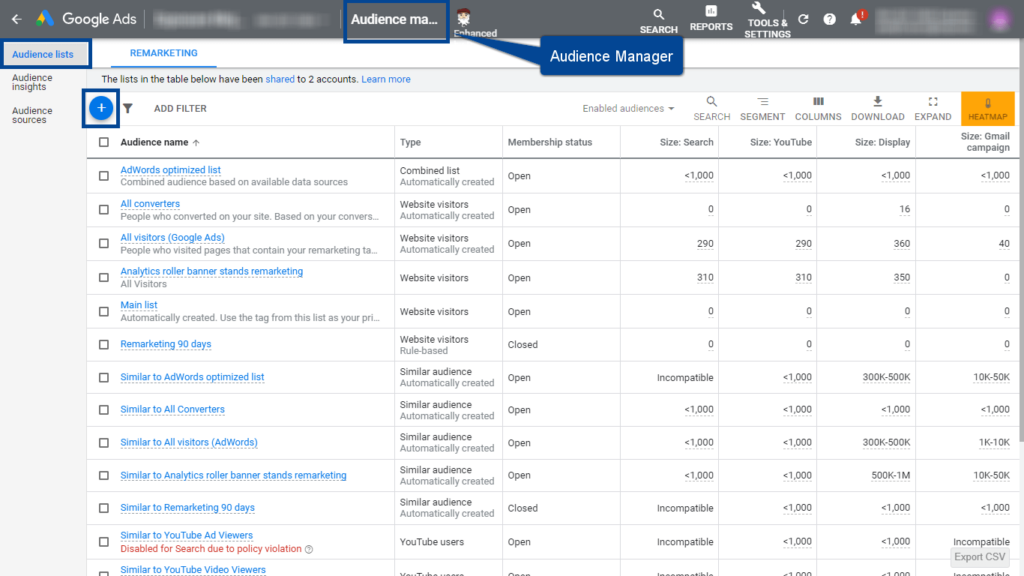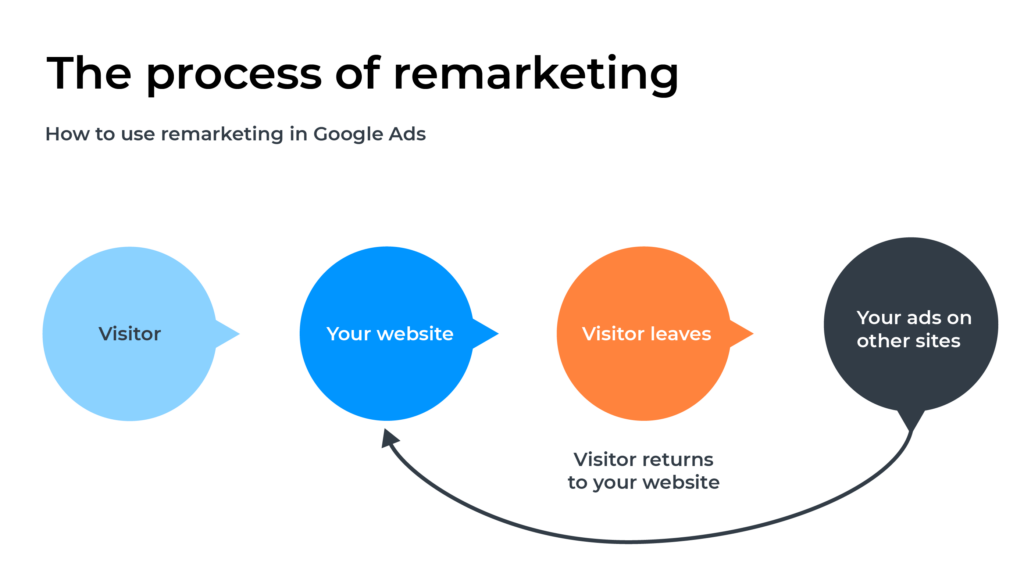Post map
ToggleBefore you proceed with an SEO campaign or run Google AdWords ads, your store’s website may have attracted a large number of visits from potential customers. However, you may still not have been able to convert the majority of these visitors into sales transactions. What is Google Ads Remarketing Audience? How to create a marketing target in Google advertising. Let’s explore and answer the questions in today’s article with Optimal FB.
Learn about Google Ads Remarketing Audience
Google Remarketing, or remarketing, is a type of advertising that Google provides to support advertisers in reconnecting with users who have previously visited their website within a certain period. In particular, this target group is often those who have taken actions such as viewing products, adding to a cart, or even completing the purchase process. Using Google Remarketing helps advertisers continue to reach and interact with this group of users, to motivate them to complete the purchase process or drive further action. This increases the conversion rate and effectiveness of advertising campaigns. If you are starting to learn about Google Remarketing, you should first have an overview of Google’s advertising services. This will help you better understand how Google Remarketing works and how it can be integrated into your marketing strategy.
Google Remarketing ads target specific groups such as:
- Customers who visit the website but do not convert.
- Customers who have visited the website a certain number of times.
- Customers who first visit the website through advertising channels such as SEO, Google Adwords, etc.
- Customers who have visited and completed goals such as making a call, placing an order, etc.
- Customers who have viewed a specific item on your website within a certain number of days.

The operation process of remarketing in Google advertising
When a customer visits your website, the system will automatically save information about their behavior by attaching a tracking code, also known as cookies. This helps the system identify and track users on your website. For example, if a user belongs to the remarketing customer list, the system will automatically store their cookies. Then, Google will use this information to deliver ads to those who have previously visited your website.
Before the Remarketing list can work, users need to add a remarketing code snippet to their website. This code snippet is provided by Google Adwords or websites they want to market to their customers. Once this code snippet is added, the remarketing list will be activated, allowing the system to track and interact with users who have visited your website. This creates a valuable opportunity to continue to engage and interact with potential customers, increase conversion opportunities, and create better marketing effectiveness.
What are the benefits of using Google Remarketing?
Google Remarketing Ads offers users a wide range of options and flexibility, helping them deliver marketing campaigns effectively. Below are some of the benefits that Google Remarketing ads bring to businesses including:
- Audience adjustment: Google Remarketing ads allow flexible audience adjustment and customization. You can specify which audience groups should receive your ads based on previous behavior on your site.
- Depth and breadth of visibility: Individuals and businesses can determine how long their ads are visible, from one hour to one year. This helps optimize remarketing campaigns according to their specific needs and the goals of their marketing strategy.
- Thematic targeting and context: Google Remarketing Ads allows you to target and display ads based on site performance or user location. You can customize your ads to appear only on your best-performing or highest-performing websites on Google Adwords.
- Highly effective and cost-optimized: By only showing ads to users who have previously visited your website, Google Remarketing ads help optimize marketing costs. This helps you save on your marketing budget and increase your campaign performance by reaching only the audiences most likely to convert.
How to create a remarketing audience Google ads
After inserting the code into the website and collecting all the necessary data, you can proceed to create an audience file from this data source to use for Remarketing advertising campaigns on Google AdWords. The detailed object file creation process is as follows:
Step 1: Access your advertising account on Google AdWords.
Step 2: Under Tools and Settings, then select Audience Manager.
Step 3: Click the plus icon +, then select Website Visitors.
Step 4: Proceed to create an object group:
- Name your audience.
- In the member list: Here, you can select all Page Visitors.
- Identify pages visited: You can select the option that matches any rule group or that matches the rule group.
- If you want to choose a URL or referrer URL, you can do that here as well.
- In the Contains section, you can add conditions like contains, equals, starts with…
- In the settings, you can select the URL Equal to the landing page URL on your website.
Step 5: Once completed, scroll down and select Create object to complete the operation.

The above article is the information that Optimal FB has shared in detail, hoping that it can help you understand the concept and benefits of remarketing audience Google ads and implementing it. Audience remarkets Google ads successfully.
Contact Info
We provide services facebook dropship ads nationwide, and with a team of experienced and qualified staff who both support advertising and can directly perform Facebook advertising if you need. Contact us via phone number: +84 564 104 104 for detailed advice.
Frequently asked questions
When creating remarketing audiences in Google ads, there are some important things you should consider. First, clearly define the goal of your remarketing campaign and the specific target audience you want to reach. Then, choose the specific websites or URLs you want to track and reach your audience. Make sure you consider setting the right conditions and rules to select users with the specific behavior you want to target. Finally, periodically test and optimize to ensure that your campaigns are achieving maximum effectiveness.
Although Google Remarketing Ads have many advantages such as increasing conversion opportunities and optimizing advertising costs, they also have their disadvantages. One of the common disadvantages of Remarketing is the annoyance it can cause for some customers. When a user has a frustrating experience or doesn’t want to make a transaction, constantly receiving notifications or ads from the same business can annoy them and have a counterproductive effect. This can lead to users blocking or turning off that business’s ads, reducing the performance of the Remarketing campaign.


